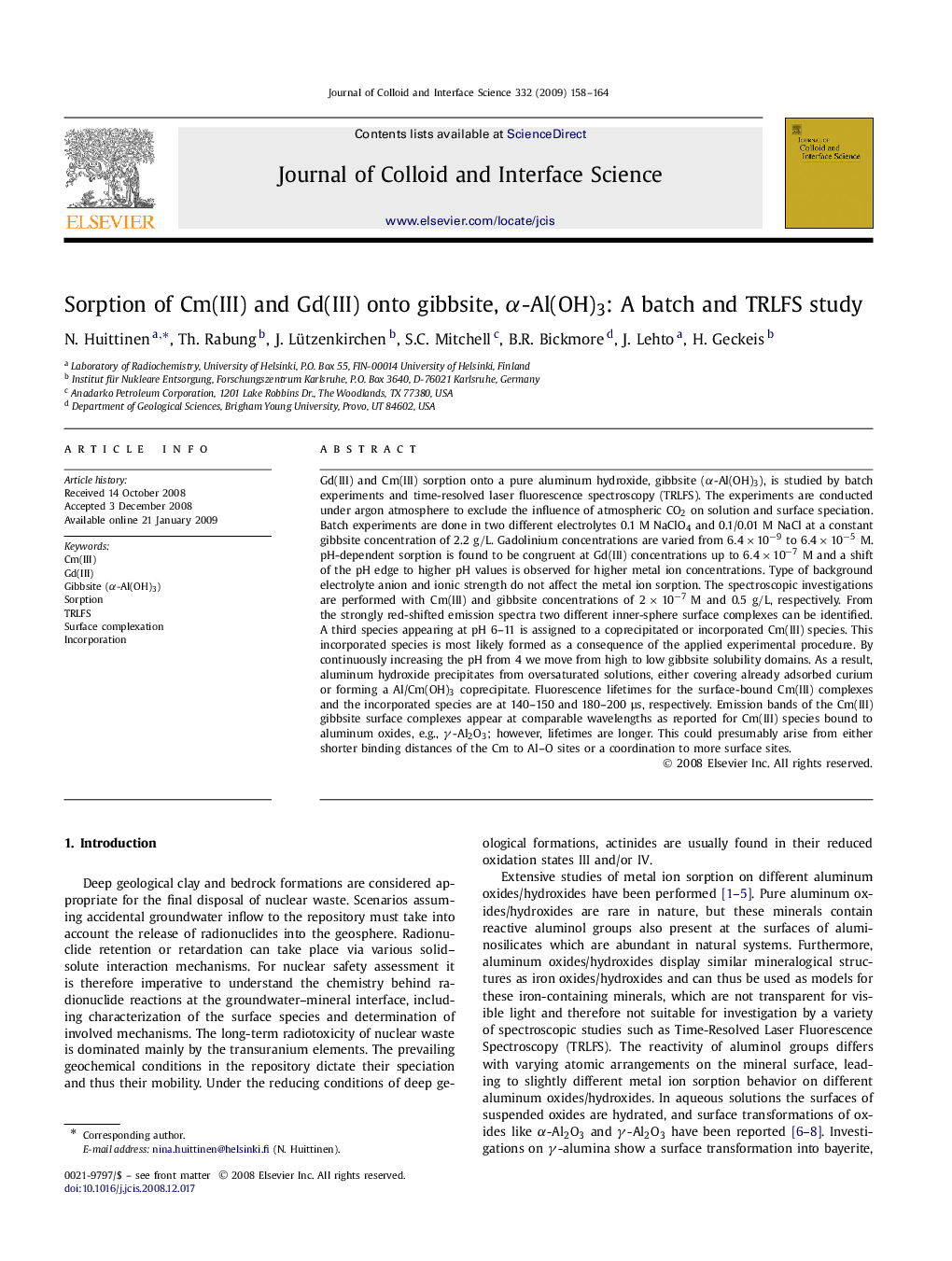| Article ID | Journal | Published Year | Pages | File Type |
|---|---|---|---|---|
| 610498 | Journal of Colloid and Interface Science | 2009 | 7 Pages |
Gd(III) and Cm(III) sorption onto a pure aluminum hydroxide, gibbsite (α-Al(OH)3), is studied by batch experiments and time-resolved laser fluorescence spectroscopy (TRLFS). The experiments are conducted under argon atmosphere to exclude the influence of atmospheric CO2 on solution and surface speciation. Batch experiments are done in two different electrolytes 0.1 M NaClO4 and 0.1/0.01 M NaCl at a constant gibbsite concentration of 2.2 g/L. Gadolinium concentrations are varied from 6.4×10−96.4×10−9 to 6.4×10−5 M6.4×10−5 M. pH-dependent sorption is found to be congruent at Gd(III) concentrations up to 6.4×10−7 M6.4×10−7 M and a shift of the pH edge to higher pH values is observed for higher metal ion concentrations. Type of background electrolyte anion and ionic strength do not affect the metal ion sorption. The spectroscopic investigations are performed with Cm(III) and gibbsite concentrations of 2×10−7 M2×10−7 M and 0.5 g/L, respectively. From the strongly red-shifted emission spectra two different inner-sphere surface complexes can be identified. A third species appearing at pH 6–11 is assigned to a coprecipitated or incorporated Cm(III) species. This incorporated species is most likely formed as a consequence of the applied experimental procedure. By continuously increasing the pH from 4 we move from high to low gibbsite solubility domains. As a result, aluminum hydroxide precipitates from oversaturated solutions, either covering already adsorbed curium or forming a Al/Cm(OH)3 coprecipitate. Fluorescence lifetimes for the surface-bound Cm(III) complexes and the incorporated species are at 140–150 and 180–200 μs, respectively. Emission bands of the Cm(III) gibbsite surface complexes appear at comparable wavelengths as reported for Cm(III) species bound to aluminum oxides, e.g., γ-Al2O3; however, lifetimes are longer. This could presumably arise from either shorter binding distances of the Cm to AlO sites or a coordination to more surface sites.
Graphical abstractpH-dependent sorption of Gd(III) onto gibbsite, α-Al(OH)3 (left), and Cm(III) emission spectra of curium complexes on gibbsite (right) are presented.Figure optionsDownload full-size imageDownload as PowerPoint slide
